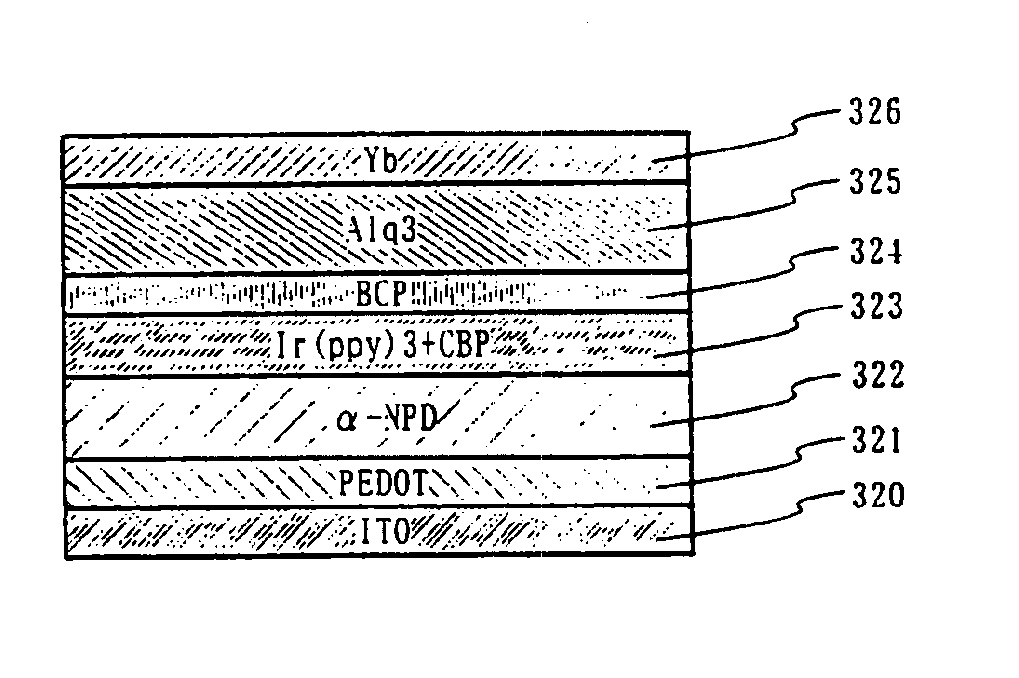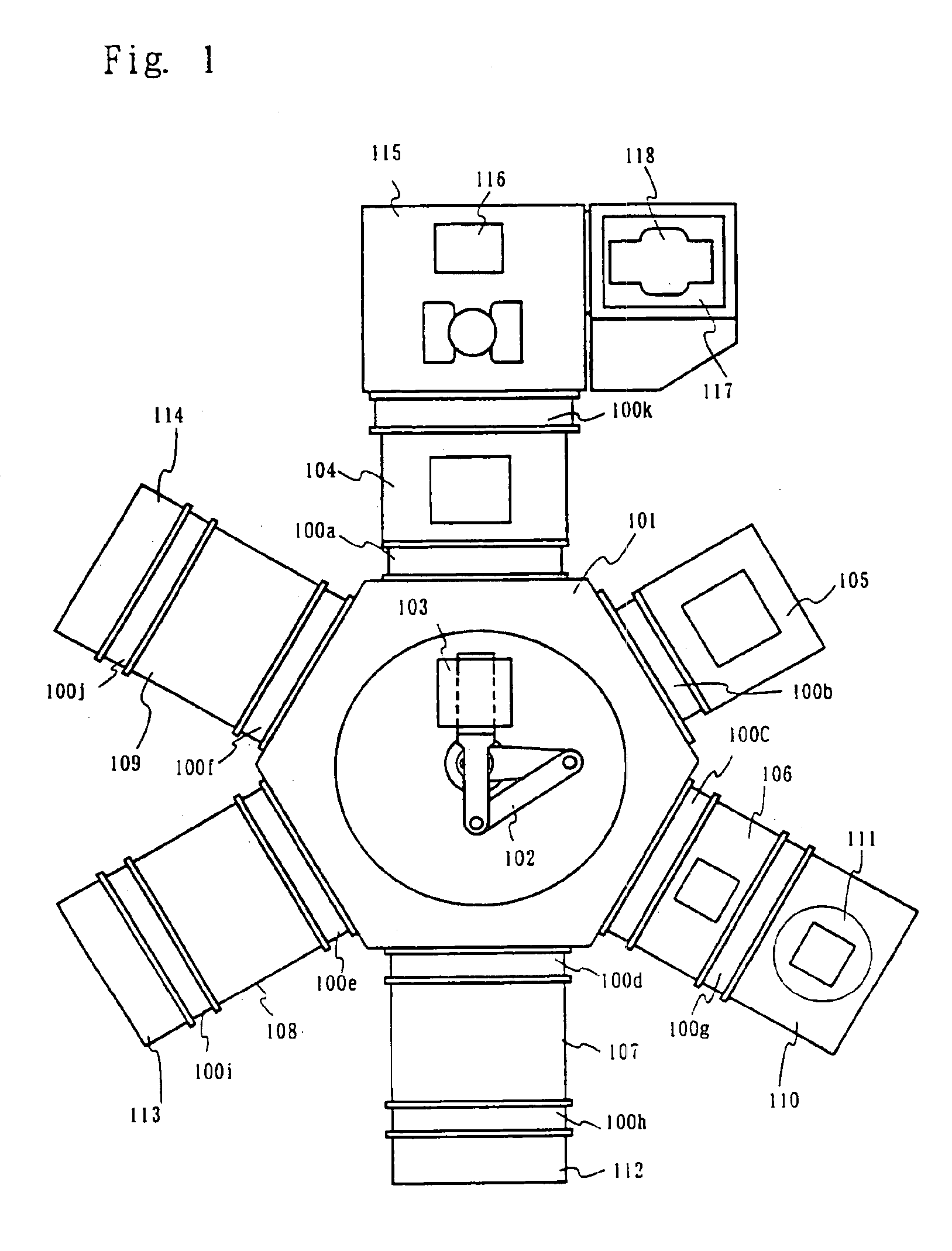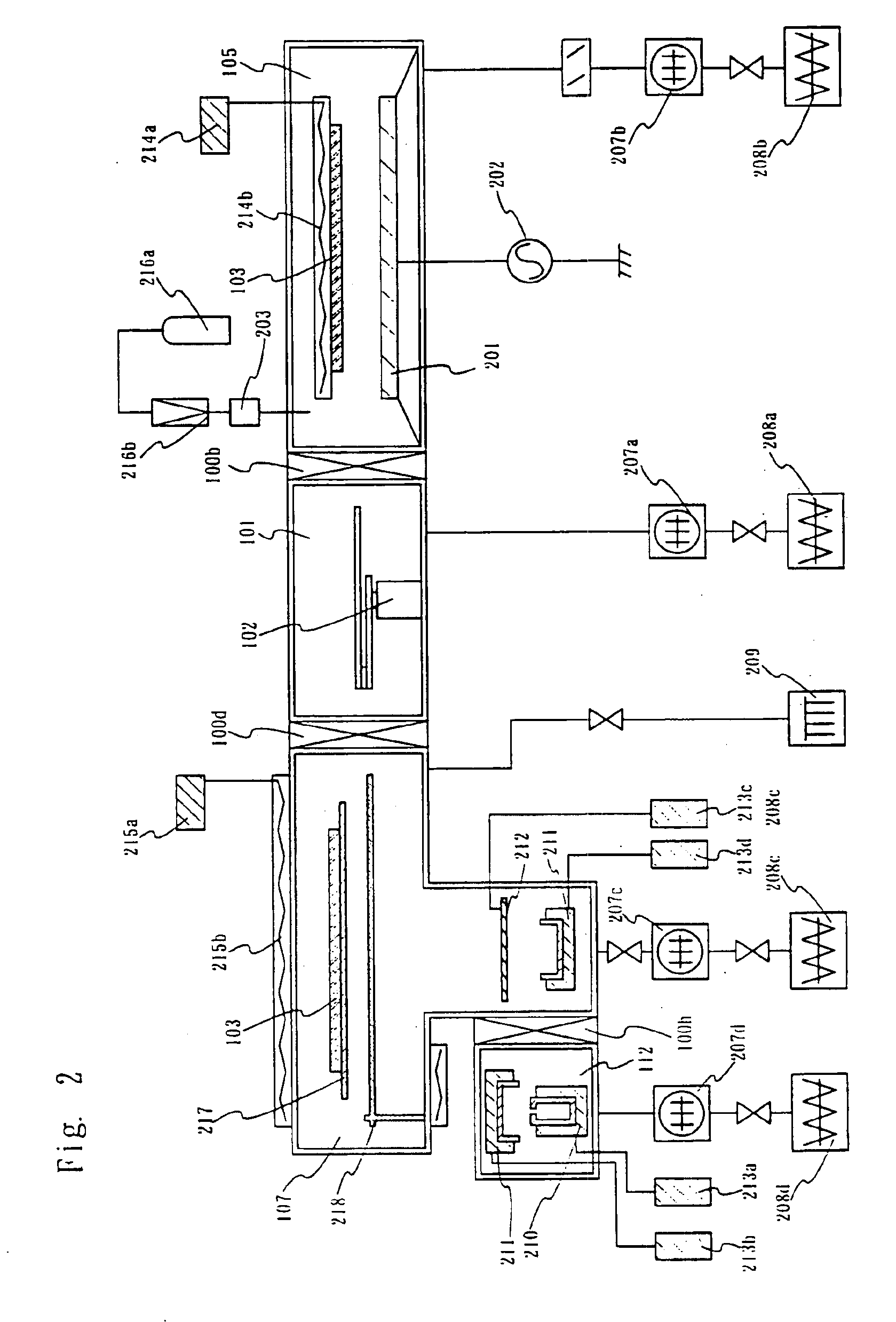Light emitting device and manufacturing method thereof
a technology of light emitting device and manufacturing method, which is applied in the direction of discharge tube luminescnet screen, discharge tube/lamp details, electric discharge lamps, etc., can solve the problems of affecting the practical application of the device, affecting the effect of the device, and affecting the effect of the effect of the devi
- Summary
- Abstract
- Description
- Claims
- Application Information
AI Technical Summary
Benefits of technology
Problems solved by technology
Method used
Image
Examples
embodiment 1
[Embodiment 1]
[0054]An example of an organic light emitting element manufacturing apparatus capable of reducing the concentration of impurities such as oxygen and H2O contained in an organic compound is explained using FIG. 1. FIG. 1 shows an apparatus for performing the formation of layers made from organic compounds, the formation of cathodes, and sealing. A conveyor chamber 101 is connected to a loading chamber 104, a preprocessing chamber 105, an intermediate chamber 106, and film formation chambers (A) 107 to (C) 109 through gates 100a to 100f respectively. The preprocessing chamber 105 is formed with the goal of performing gas emission processing of the substrate to be processed, and improving the surface of the substrate. It becomes possible to perform heat treatment in a vacuum and to perform plasma processing using an inert gas.
[0055]The film formation chambers (A) 107 and (B) 108 are processing chambers for forming films, made mainly from low molecular weight organic compo...
embodiment 2
[Embodiment 2]
[0072]There are no limitations placed on the structure of the organic light emitting elements manufactured using the film formation apparatus shown in Embodiment 1. Organic light emitting elements are formed by an anode made from a transparent conductive film, a cathode containing an alkaline metal and a layer made from an organic compound therebetween. The layer made from an organic compound is composed of a single layer or a plurality of layers. Each layer is referred to separately by names such as hole injecting layer, hole transporting layer, light emitting layer, electron transporting layer, and electron injecting layer, depending on its purpose and function. These layers can be formed from either low molecular weight organic compound materials or high molecular weight organic compound materials, or can be formed by appropriately combining both.
[0073]Organic compound materials having superior hole transporting properties are selected for hole injecting layers and ...
embodiment 3
[Embodiment 3]
[0081]FIG. 6 is an example showing a structure of an active matrix drive light emitting device. TFTs are formed in a pixel portion and in circuits having various functions in the periphery of the pixel portion. Amorphous silicon or polycrystalline silicon can be selected for the semiconductor film material used in forming channel forming regions of the TFTs, and either may be employed with the present invention.
[0082]A glass substrate or an organic resin substrate is employed as a substrate 601. Organic resin substrates have lighter weight compared to glass substrates, and are effective in reducing the weight of the light emitting device itself. Organic resin materials such as polyimide, polyethylene terephthalate (PET), polyethylene naphthalate (PEN), polyether sulfone (PES), and aramids are suitable for manufacturing light emitting devices as organic resin substrate. It is preferable to use glass substrates referred to as non-alkaline glass, namely barium borosilicat...
PUM
 Login to View More
Login to View More Abstract
Description
Claims
Application Information
 Login to View More
Login to View More - R&D
- Intellectual Property
- Life Sciences
- Materials
- Tech Scout
- Unparalleled Data Quality
- Higher Quality Content
- 60% Fewer Hallucinations
Browse by: Latest US Patents, China's latest patents, Technical Efficacy Thesaurus, Application Domain, Technology Topic, Popular Technical Reports.
© 2025 PatSnap. All rights reserved.Legal|Privacy policy|Modern Slavery Act Transparency Statement|Sitemap|About US| Contact US: help@patsnap.com



